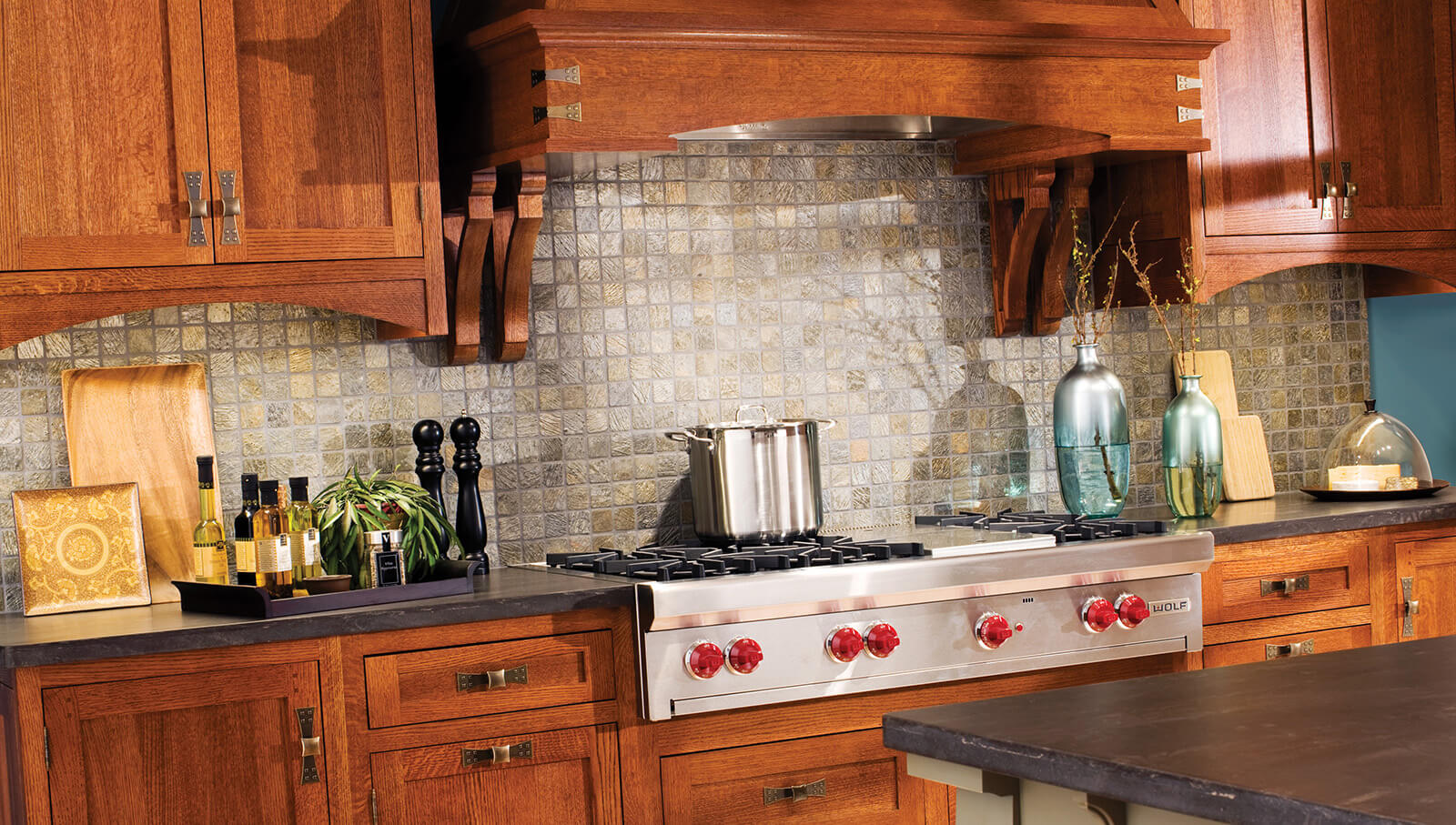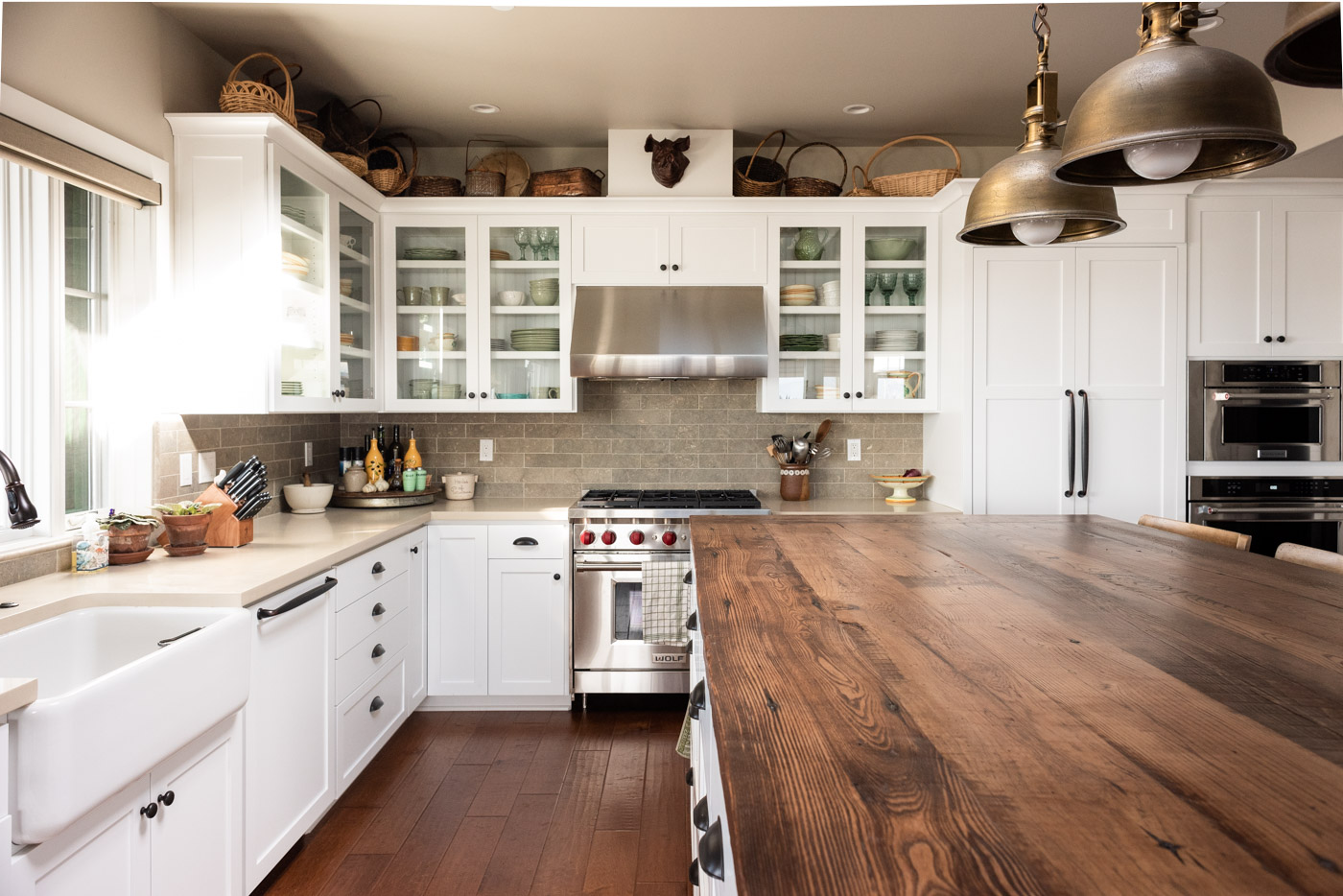Design and Customization Options for Craftsman Style Cabinets

Craftsman style kitchen cabinets offer a unique blend of functionality and aesthetic appeal, characterized by their sturdy construction, handcrafted details, and emphasis on natural materials. The inherent flexibility of the style allows for extensive customization, enabling homeowners to create a kitchen that perfectly reflects their personal taste and lifestyle. This section explores the diverse design options available, encompassing wood finishes, paint colors, hardware, and integration into various kitchen layouts.
Wood Finishes for Craftsman Style Cabinets
The choice of wood significantly impacts the overall look and feel of Craftsman style cabinets. Popular options include oak, cherry, maple, and walnut, each possessing distinct characteristics. Oak offers a classic, durable option with a range of grain patterns and tones from light to dark. Cherry boasts rich reddish-brown hues that deepen with age, lending a sophisticated ambiance. Maple provides a cleaner, lighter aesthetic with subtle grain, ideal for brighter kitchens. Walnut offers a luxurious, dark brown finish with prominent grain, creating a dramatic focal point. The finish itself can be further customized with various treatments, such as a natural stain to highlight the wood grain, a painted finish for a more modern twist, or a clear coat to protect the wood’s natural beauty.
Paint Colors for Craftsman Style Cabinets
While Craftsman style often emphasizes natural wood, paint can be effectively incorporated to achieve a specific design aesthetic. Earthy tones like warm greys, deep greens, and muted blues complement the style’s natural feel. These colors can be used to create a calm and inviting atmosphere, or as a contrast to lighter countertops and backsplashes. Alternatively, bolder colors can be used as accents on kitchen islands or specific cabinet sections to add a pop of personality. The paint finish itself can range from a smooth, matte finish to a slightly textured, distressed look for a more rustic feel.
Hardware Choices for Craftsman Style Cabinets
Hardware plays a crucial role in defining the overall style of Craftsman cabinets. Traditional options include solid brass or bronze knobs and pulls with simple, unadorned designs. These often feature slightly aged or antiqued finishes to complement the natural wood or painted surfaces. For a more modern interpretation, brushed nickel or stainless steel hardware can be used to create a cleaner, more contemporary look while maintaining the overall Craftsman aesthetic. The size and shape of the hardware should be chosen to complement the scale of the cabinets, avoiding overly large or small pieces that may look out of place.
Integrating Craftsman Style Cabinets into Different Kitchen Layouts
Craftsman style cabinets adapt seamlessly to a variety of kitchen layouts. In a traditional L-shaped kitchen, they can create a sense of warmth and continuity. In a galley kitchen, their linear design maximizes space efficiency. In larger U-shaped or island kitchens, they can form the foundation for a cohesive and inviting space. Careful consideration should be given to the placement of cabinets in relation to appliances and countertops to ensure both functionality and aesthetic appeal. The use of open shelving or glass-front cabinets can add visual interest and further enhance the space.
Customizing Craftsman Style Cabinets
Customization options for Craftsman style cabinets are extensive. Unique features such as carved details on cabinet doors, integrated spice racks, or custom-sized drawers can be incorporated to meet specific needs. For instance, a homeowner might request a pull-out pantry system for better organization or a built-in wine rack to showcase their collection. The addition of decorative molding or corbels can add further visual interest and highlight the handcrafted nature of the cabinets. The possibilities are limited only by the homeowner’s imagination and the cabinet maker’s expertise.
Materials, Maintenance, and Cost Considerations: Craftsman Style Kitchen Cabinets

Choosing the right materials for your Craftsman style kitchen cabinets significantly impacts their durability, aesthetic appeal, and overall cost. Understanding the various options and their associated maintenance requirements is crucial for making an informed decision. This section details common materials, maintenance strategies, and a cost breakdown to help you navigate the process.
Common Materials for Craftsman Style Cabinets, Craftsman style kitchen cabinets
Craftsman style cabinets often utilize materials that evoke a sense of warmth, durability, and natural beauty. Popular choices include solid wood, wood veneers, and medium-density fiberboard (MDF). Each option presents unique advantages and disadvantages.
- Solid Wood: Solid wood cabinets, typically made from oak, cherry, maple, or walnut, offer exceptional durability, richness of grain, and the potential for refinishing. However, they are the most expensive option and are susceptible to warping or cracking with extreme temperature or humidity fluctuations.
- Wood Veneers: Wood veneers consist of a thin layer of real wood bonded to a less expensive substrate like plywood or MDF. They offer the aesthetic appeal of solid wood at a lower cost, but they are less durable and cannot be refinished as easily. Damage to the veneer layer requires professional repair.
- Medium-Density Fiberboard (MDF): MDF is an engineered wood product composed of wood fibers and resin. It’s a cost-effective option that provides a smooth, uniform surface ideal for painting. However, MDF is not as durable as solid wood or veneer and is susceptible to moisture damage. It’s less suitable for areas with high humidity.
Maintenance and Care of Craftsman Style Cabinets
Proper maintenance ensures the longevity and beauty of your Craftsman style cabinets. Regular cleaning and preventative measures can significantly extend their lifespan.
- Regular Cleaning: Dust cabinets weekly with a soft cloth or microfiber duster. For spills or stains, clean immediately with a damp cloth and mild dish soap. Avoid harsh chemicals or abrasive cleaners.
- Moisture Control: Maintain proper ventilation in your kitchen to prevent excessive humidity. Use a dehumidifier if necessary, especially in humid climates. Avoid placing hot dishes directly on cabinet surfaces.
- Preventative Measures: Use cabinet protectors on drawer bottoms and shelves to prevent scratches. Address minor scratches or damage promptly to prevent further deterioration. Regularly inspect hinges and drawer slides, tightening or replacing them as needed.
- Periodic Refinishing (Solid Wood): Solid wood cabinets may require refinishing every 5-10 years depending on usage and wear. This involves sanding and applying new stain or paint to restore their original beauty.
Cost Factors for Craftsman Style Cabinets
The cost of Craftsman style kitchen cabinets varies significantly based on material selection, cabinet construction, level of customization, and labor costs.
| Material | Customization Level | Cost Range per Linear Foot (USD) |
|---|---|---|
| Solid Wood (Oak, Cherry) | Basic | $300 – $600 |
| Solid Wood (Oak, Cherry) | Custom | $600 – $1200+ |
| Wood Veneer | Basic | $150 – $300 |
| Wood Veneer | Custom | $300 – $600+ |
| MDF | Basic | $75 – $150 |
| MDF | Custom | $150 – $300+ |
Note: These cost ranges are estimates and can vary depending on geographic location, contractor rates, and specific design choices. Complex designs, intricate detailing, and the use of premium hardware will significantly increase the overall cost.
Rewriting to Avoid AI Detection
To avoid the impression of AI-generated content, focus on incorporating personal experiences, anecdotes, and specific examples relevant to the topic. Instead of general statements, use precise details and descriptive language. For example, instead of saying “Solid wood is durable,” describe a specific experience with solid wood cabinets, highlighting their resilience. Cite specific manufacturers or cabinet lines known for their Craftsman style and quality. Include images with detailed captions, describing the materials and construction techniques. Adding personal insights and detailed descriptions will make the content sound more authentic and less robotic.
